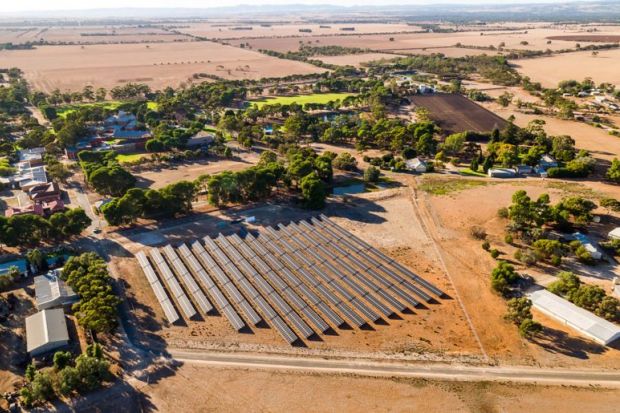The Australian National University (ANU) has set itself a deadline to reverse its greenhouse gas footprint, vowing to be “taking more carbon out of the atmosphere than we put in” by the end of the decade.
The Canberra institution aims to be a negative net emitter by 2030 after meeting an interim target of zero net emissions by 2025.
The dates put flesh on the bones of the ANU Below Zero Initiative approved by the university’s council in February 2020, following Australia’s catastrophic “Black Summer” bushfires.
Vice-chancellor Brian Schmidt said the university was “walking the walk” to tackle climate change by reducing emissions and offsetting those it could not avoid.
“Climate change is already here,” the Nobel prizewinning physicist said. “The past decade includes nine of the 10 hottest years on record around the world, [and] 2019 was Australia’s hottest year ever.”
Ecologist Mark Howden, who is leading the initiative, said research and teaching would play a role in meeting the targets. “We will only use carbon offsets that have a research and teaching connection at the university,” said Professor Howden, who directs the ANU Institute for Climate, Energy and Disaster Solutions.
“By 2030, the goal is for ANU to achieve below-zero emissions for energy, waste, business travel and direct on-campus greenhouse gas emissions,” he added.
A recent survey had found that more than 90 per cent of ANU staff and students were “concerned or alarmed” about climate change, compared with 52 per cent of the Australian population, he said.
Meanwhile, the University of Adelaide has officially launched a solar and energy storage project at its Roseworthy campus 50km north of the city.
The project features a 3,200-panel solar farm, batteries and a digital micro-grid. It has been operating since April, generating some 42 per cent of the campus’ energy needs.
“The project will be a living laboratory, providing our researchers with opportunities…in areas including energy management, grid segregation, low-cost fault detection systems, system resilience and cybersecurity,” said Roseworthy dean Wayne Hein.
“There will also be…scope to incorporate different aspects of the facility into university courses and projects for students studying everything from engineering, cybersecurity and space through to environmental science.”
Register to continue
Why register?
- Registration is free and only takes a moment
- Once registered, you can read 3 articles a month
- Sign up for our newsletter
Subscribe
Or subscribe for unlimited access to:
- Unlimited access to news, views, insights & reviews
- Digital editions
- Digital access to THE’s university and college rankings analysis
Already registered or a current subscriber? Login












